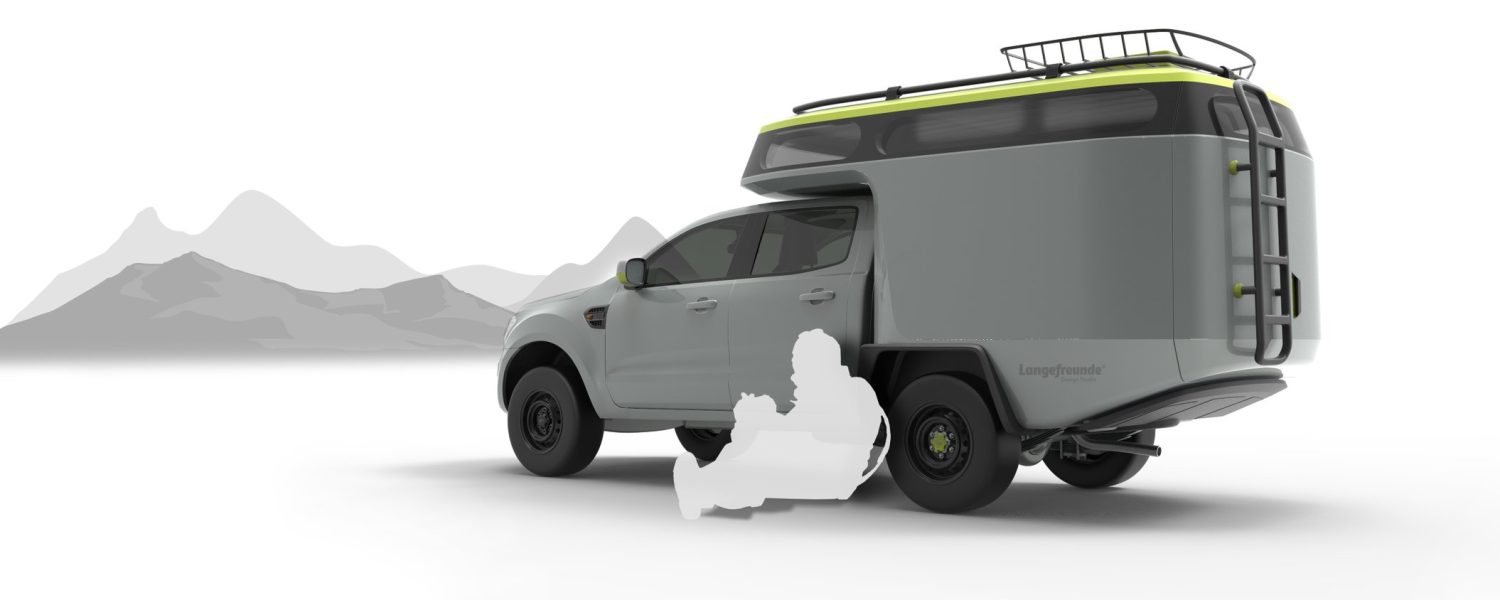Photos courtesy of Cabineer.de
In our world of vehicle-based travel, it’s unusual to see companies putting the spotlight on the environmental footprint of their products. But the creators of the Cabineer truck camper have done just that.
Inspiration for the camper came after traveling the Pan-American Highway in a converted Land Rover Defender. The experience led the couple to believe they could create a more functional habitat but they also wanted to construct it with a higher percentage of natural materials. After returning from that trip, Max got to work designing the first Cabineer truck camper, although at the time, he didn’t realize he was creating a product that others would want, too.

One of Max’s insights from his journey through South America was that the majority of his life on the road took place outside the vehicle. And while the value of having a weatherproof refuge wasn’t lost on him, he decided that his next vehicle needed functionality that could be used from both inside and outside the shelter of his truck.
Max utilized natural fiber composites (NFC) instead of conventional materials like fiberglass or carbon fiber to construct the shell of the camper. This flax fiber and cork-based laminate is held together with resin that is partly made from linseed oil, resulting in a stable, lightweight, and more environmentally friendly composite.
A Closer Look at Natural Fiber Composites (NFCs)
The Cabineer camper is constructed using NFCs because they exhibit similar structural properties to conventional fiberglass and mineral-based composites while being lighter, and also less toxic.

As mentioned above, the Cabineer was built using a flax-based material. Because flax fibers are a bi-product of the linen industry, utilizing them for this composite requires far less energy than either glass- or carbon-fiber construction would. Additionally, the cork layer that makes up the insulation in the Cabineer’s panels can be harvested sustainably and delivers many of the same qualities offered by synthetic materials: sound reduction, water repellency, and compressive strength—without the negative environmental implications that stem from their creation or disposal.


Inside/Outside Features of the Cabineer Camper
While the inside/outside functionality of the Cabineer’s systems is not unique, it is a valuable design that most travelers will come to appreciate if they spend significant time living out of their vehicle. Systems that are accessible and functional, whether inside or outside of the cabin include:
- Refrigerator
- Stove
- Storage
Is the Cabineer Camper Available for Purchase?
Yes, the Cabineer is already available for purchase in Germany. However, it appears that each unit is made to order with a production timeline of roughly six months. Pricing starts at around €45,000 for an empty cabin and will increase depending on the camper’s systems and finishes.
Learn more at cabineer.de
Our No Compromise Clause: We carefully screen all contributors to ensure they are independent and impartial. We never have and never will accept advertorial, and we do not allow advertising to influence our product or destination reviews.


